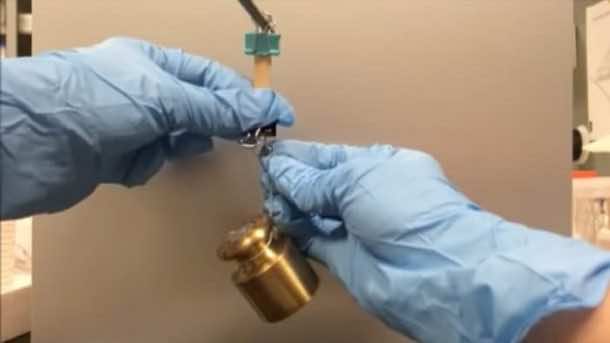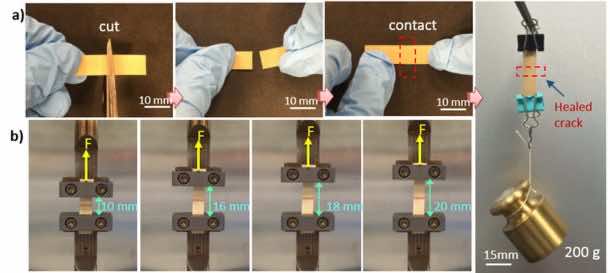The advancements in the wearable technology have established the need for a durable and robust electrical design and have prompted research for the development of self-healing electronics.
The self-healing electronics developed thus far can repair, or “self-heal”, in only one or two aspects e.g. resistance or conductivity. Self-healing materials are the ones that have the ability to naturally repair themselves with little to no external aid, once they have been subjected to extreme physical deformation like being cut in half.

However, the world of electrical engineering is at the brink of an enormous technological change. Qing Wang, Professor of Materials Science and Engineering at Penn State, and his team have successfully created a new electrical material that can automatically heal all of its properties.
“Wearable and bendable electronics are subject to mechanical deformation over time, which could destroy or break them. We wanted to find an electronic material that would repair itself to restore all of its functionality, and do so after multiple breaks.”
The most extraordinary feature of the material is that it retains its self-healing properties even after being broken multiple times. Therefore, the future hints of more durable and sturdy electrical design. Professor Qing Wang hailed the project as a new milestone in digital design.
“This is the first time that a self-healable material has been created that can restore multiple properties over multiple breaks, and we see this being useful across many applications.”
The research about the recently created material has been published in the Advanced Functional Materials detailing that once broken, the material restores all the properties required for use in the wearable as a dielectric like mechanical strength, breakdown strength to protect against surges, electrical resistivity, thermal conductivity and dielectric, or insulating properties.

The material itself comprises of boron nitride nanosheets added atop a base material of plastic polymer. Although boron nitride nanosheets are 2D, they act as electrical insulators. Though most of the self-healing materials are quite elastic and gum-like, this material is comparatively very sturdy.
Hydrogen bonding interconnects the boron nitride nanosheets. The surface of these sheets comes with functionalized hydrogen groups. Thus, the electrostatic attraction between the sheets binds them together and holds them in one place. Therefore, hydrogen bond serves as the healing agent.
Some types of the new self-healing electrical material can heal at room temperature while others require additional pressure or heat. Boron nitride nanosheets are impervious to moisture implying that the wearables fabricated from this material can be used while swimming etc.
Watch this video explaining the characteristics if the self-healing electronic material:


